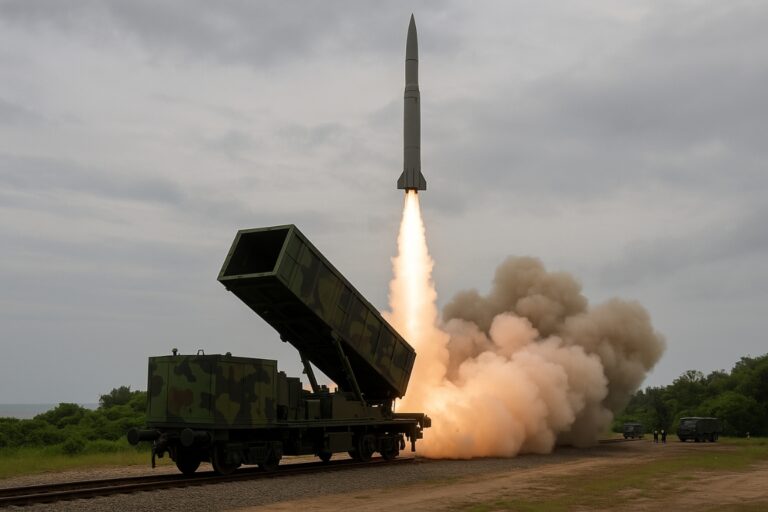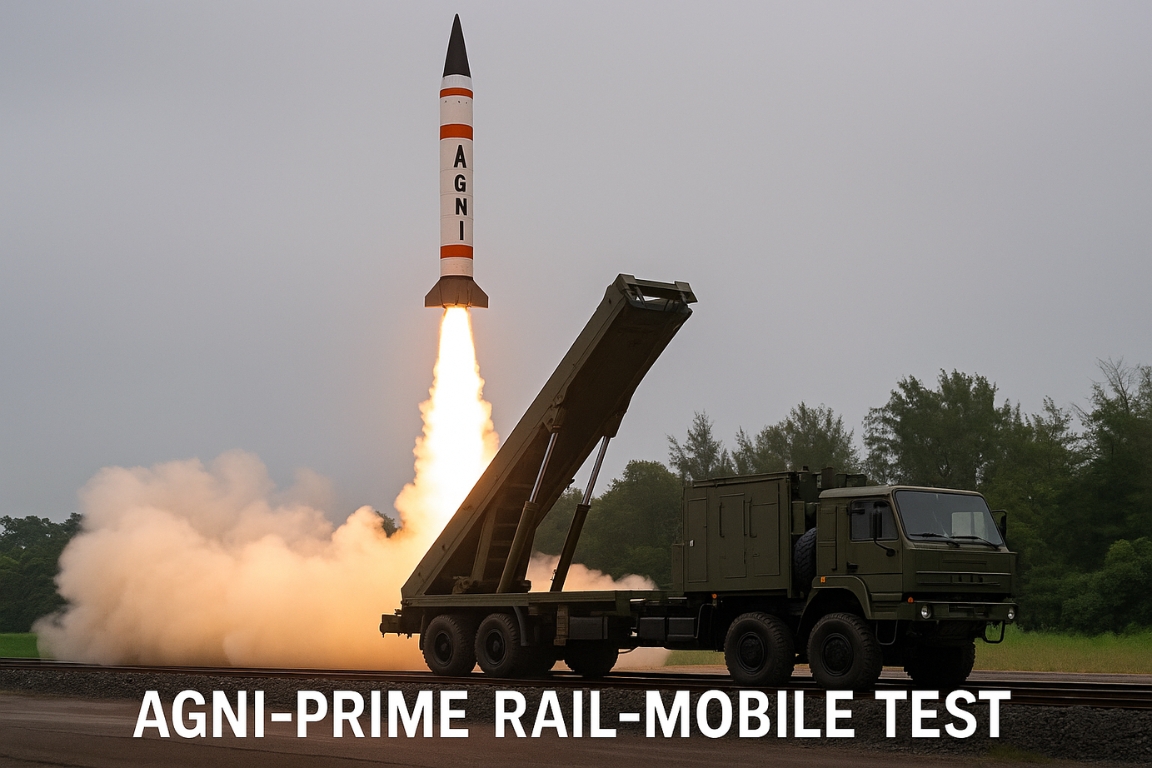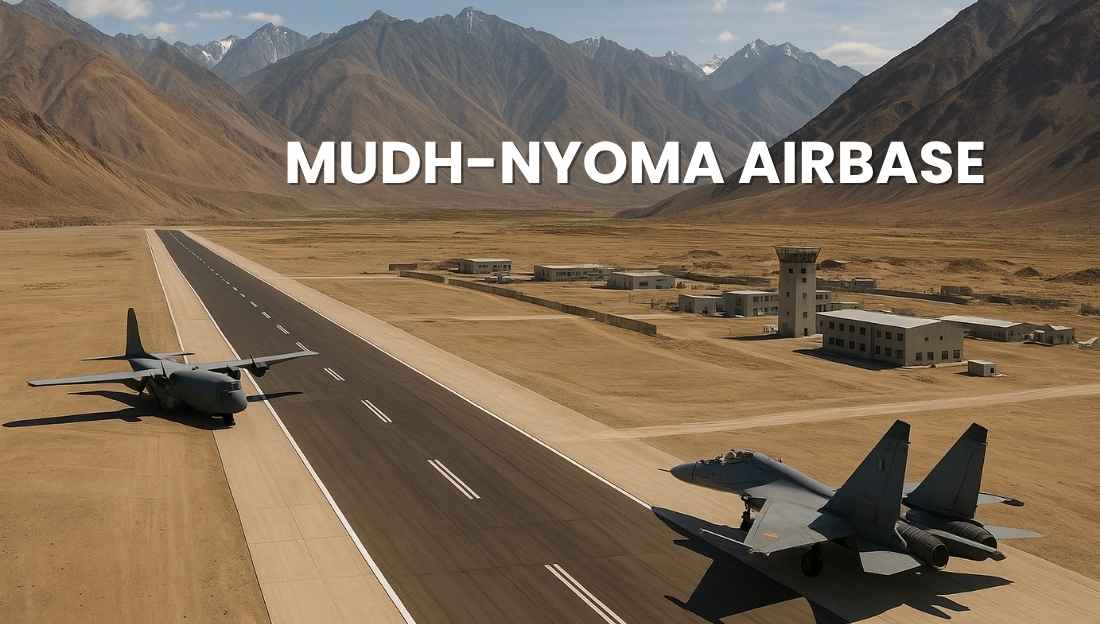The Defence Research and Development Organisation (DRDO) and Strategic Forces Command (SFC) successfully test-fired the Agni-Prime missile from a rail-mobile launcher, marking India’s first operational test of this type and demonstrating strategic mobility.
About Agni-Prime Missile
- Family & Development: Sixth missile in the Agni series, developed under the Integrated Guided Missile Development Programme (IGMDP).
- Design: Two-stage, solid-propellant, canisterised surface-to-surface ballistic missile.
- Range & Payload: 1,000–2,000 km, capable of targeting both China and Pakistan; payload up to 1.5 tonnes (1,500–3,000 kg).
- Guidance & Maneuverability: Dual-redundant navigation system; Maneuverable Re-entry Vehicle (MaRV) with delta fins to evade missile defense systems.
- Deployment: Already in road-mobile canisterised form; now successfully tested on rail-based mobile launcher.

Global Context: Rail-Based Missile Systems
- Soviet Union: RT-23 Molodets ICBM on rail; dismantled post-START Treaty.
- Russia: Barguzin rail-mobile ICBM project shelved for hypersonics.
- United States: Rail-mobile Minuteman and Peacekeeper ICBMs explored but later cancelled.
- China: DF-41 rail-mobile ICBM tested in 2016.
- North Korea: Short-range rail-based ballistic missile tested in 2021.
Significance of Rail-Based Launch
- Mobility & Concealment: Railcars can move across the network, hide in tunnels, and evade satellite detection.
- Survivability: Less vulnerable to pre-emptive strikes compared to silos.
- Rapid Response: Enables faster deployment and shorter reaction time.
- Strategic Deterrence: Strengthens India’s credible second-strike nuclear capability.
- Technological Showcase: Demonstrates India’s advanced missile development and operational readiness.
IGMDP AND AGNI SERIES
- IGMDP Launch: 1983, led by Dr. A.P.J. Abdul Kalam to achieve missile self-reliance.
- Missile Family: Prithvi (SRBM), Agni (strategic ballistic), Trishul (SR SAM), Nag (ATGM), Akash (MR SAM).
- Agni Evolution:
- Agni-I: 700–1,200 km (2007)
- Agni-II: 2,000–3,000 km (2010)
- Agni-III: 3,500 km (2007)
- Agni-IV: 4,000 km (2011)
- Agni-V: 5,000+ km, MIRV-capable
- Agni-P: 1,000–2,000 km, lighter, rail and road mobile
- Agni-VI: 6,000–10,000 km, MIRV, submarine launch under development
Strategic Importance
- Forms the backbone of India’s nuclear triad.
- Enhances deterrence against regional adversaries (China, Pakistan) and global threats.
- Rail-based mobility adds survivability, credibility, and rapid response to India’s strategic arsenal.





